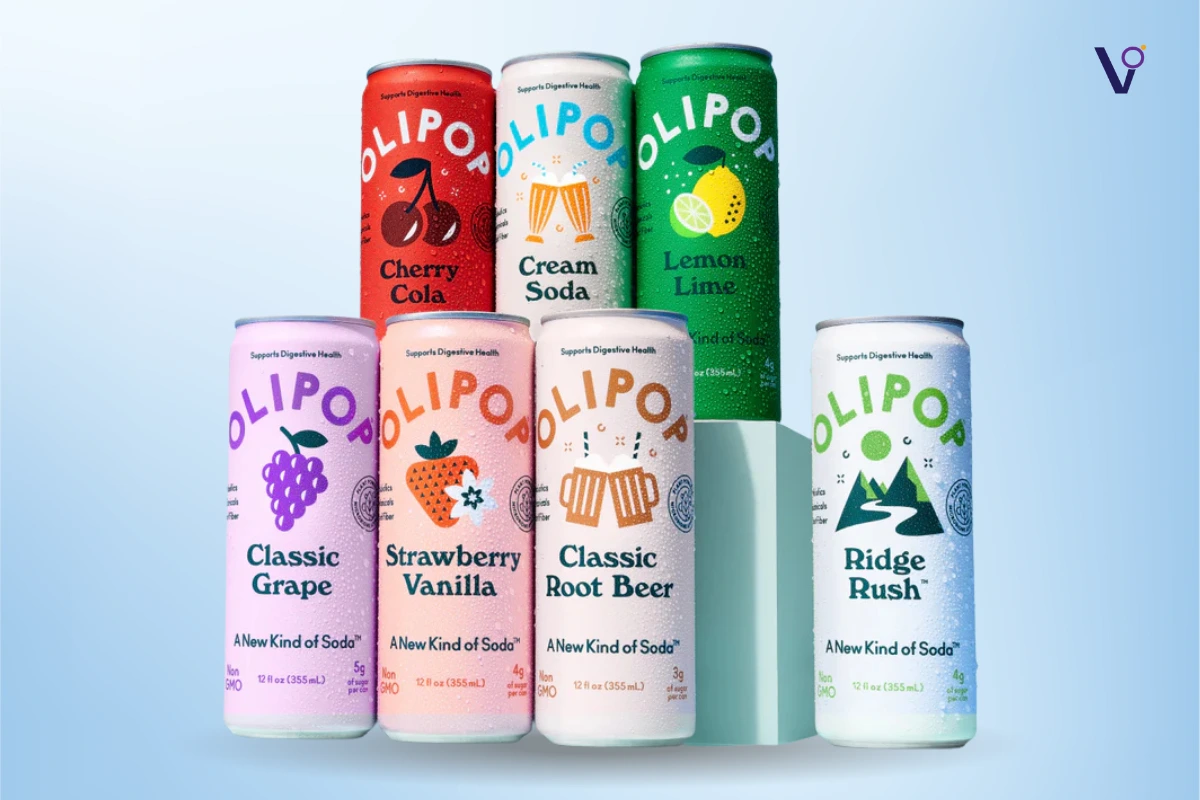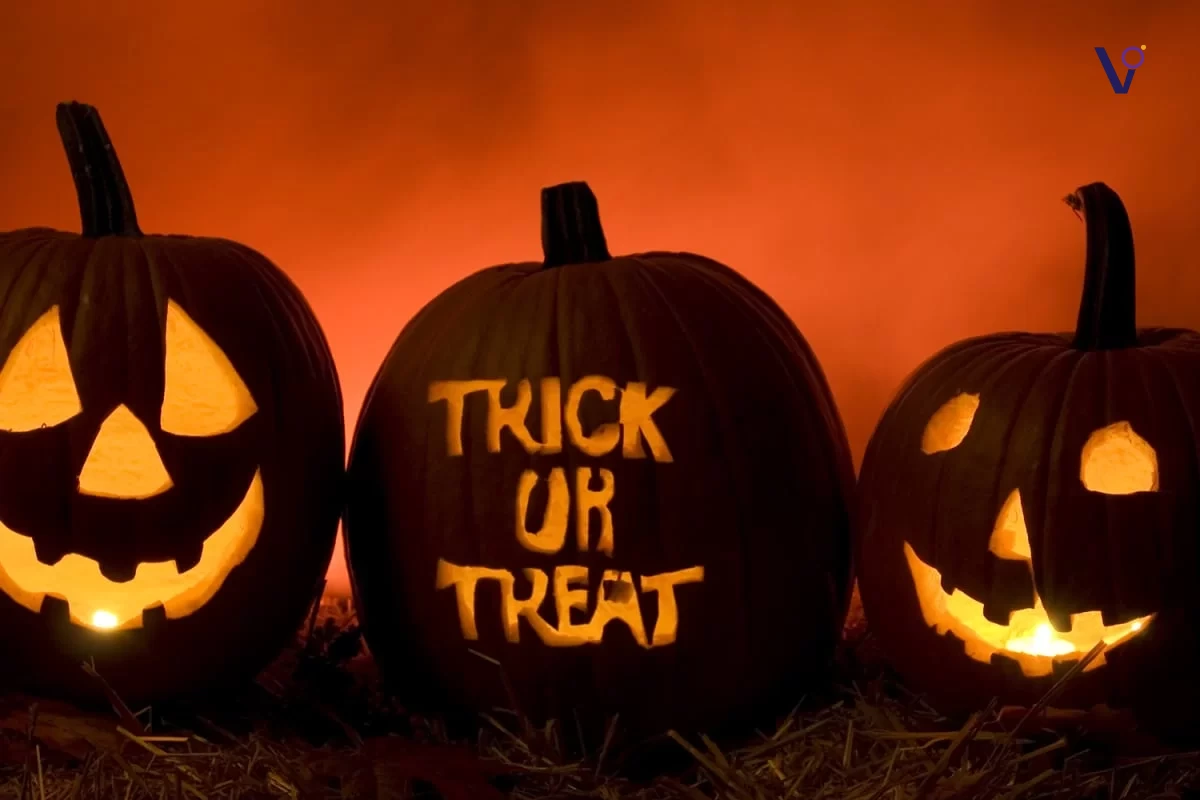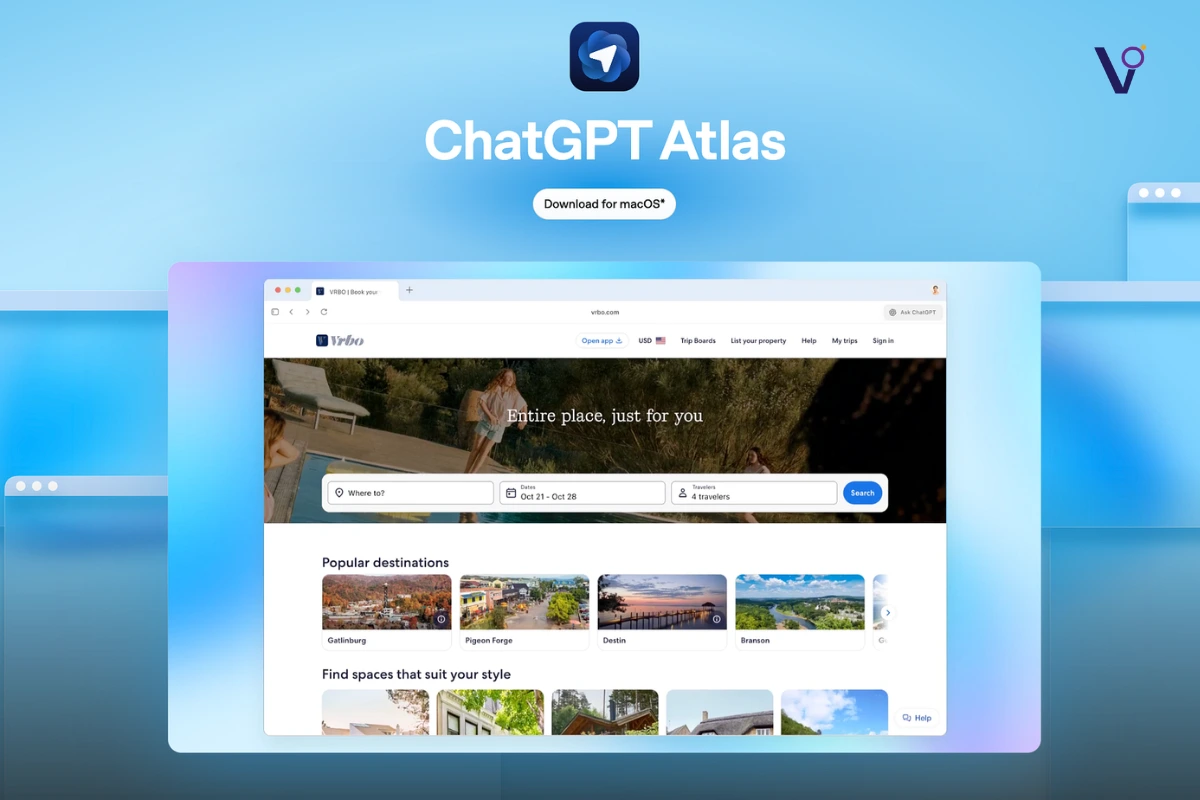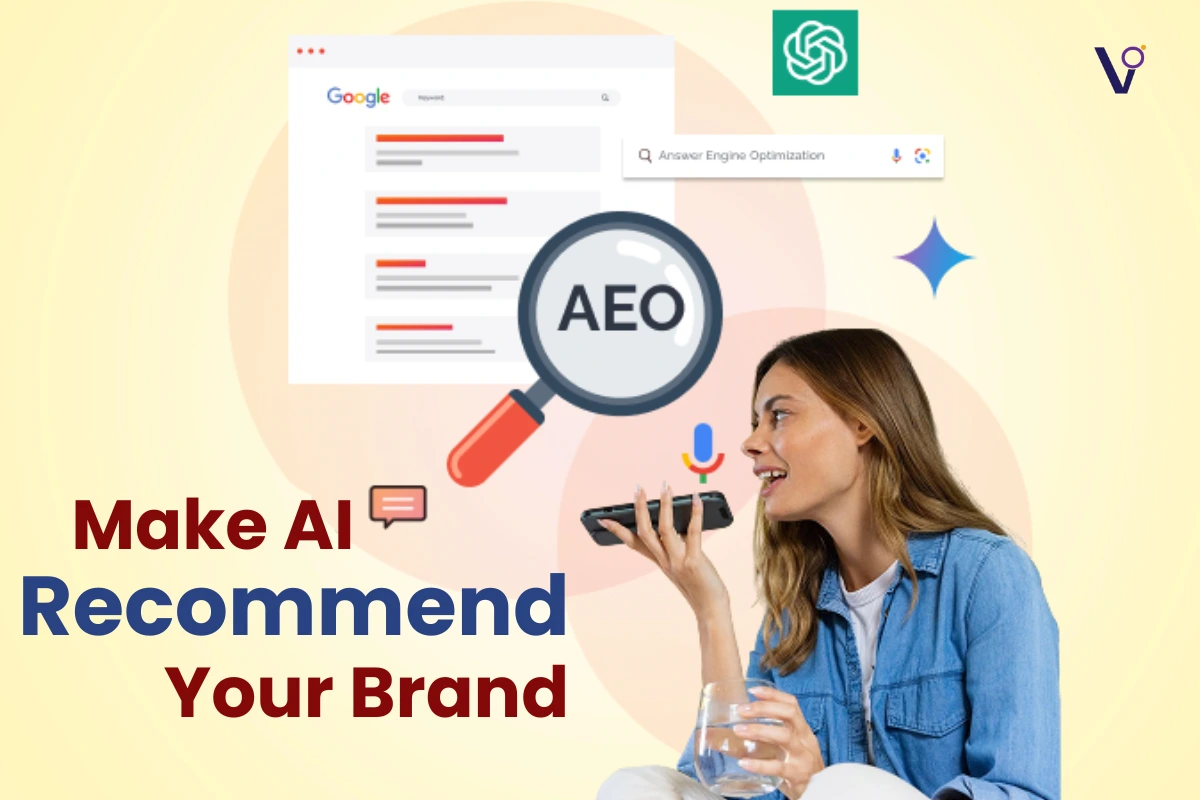In 2018, Ben Goodwin and David Lester launched Olipop, a prebiotic soda with eight plant-based ingredients to support digestive and gut health. In its first year, Olipop marketing strategy helped them make a gross revenue of $852,000, selling only at 40 grocery stores in Northern California.
Fast forward to today, Olipop isn’t just a player anymore; it’s a category leader. What started with $73.4 million in 2022 exploded past $200 million in 2023 and is now clocking in at over $400 million in annual revenue in 2025. The prebiotic soda market itself is on fire, ballooning from niche wellness shelves to a full-blown $777 million industry by early 2025, with Olipop leading the charge.
The product is great. But what really sent Olipop flying was social media culture, nostalgia, and a generation ready to ditch their sugar-bomb sodas for something better.
Let’s break down how they did it and what every brand needs to take from this.
Olipop Marketing Strategy
When most brands launch, they pitch features. Olipop took a different route. Instead of screaming “9g fiber, 5g sugar,” they made gut health cool.
The brand positioned itself as the soda for people who loved classic flavors but wanted to feel good about it. Conversations sounded human. Not like they were talking to a focus group, or a vague “health-conscious demographic.” Just real people.
That’s the move right there.
- Speak the language your customers actually use
- Address the problems they care about
- Wrap it up in something familiar with a better-for-you edge
People weren’t out there craving prebiotic fibers. They just wanted something that tasted like soda and didn’t trash their gut.
Gen Z and Millennials Impact
You want to know when Olipop really started blowing up? When TikTok and Instagram creators started making those “what I eat in a day” reels and aesthetic fridge restocks.
Gen Z and millennials turned it into a vibe.
They weren’t just drinking it. They were posting about it. Showing off the packaging. Swapping flavor recommendations. Making viral recipes with Olipop as a mixer.
And the brand knew exactly how to lean into that.
- Reposting UGC like crazy
- Partnering with creators whose followers actually buy stuff
- Getting in front of niche communities, not just running generic influencer campaigns
Nostalgia Hits Different
Another thing Olipop nailed? Flavor nostalgia.
Most health drinks taste like grass. Olipop made sure their soda hit those classic, familiar notes people grew up with.
- Cola
- Root Beer
- Classic Cream Soda
And they did it while swapping 39g of sugar for 2-5g and sneaking in 9g of fiber.
It wasn’t just about being healthy. It was about delivering on the soda experience while letting people feel good about it.
Key move:
- Understand what people actually miss about the old product
- Keep the emotional hook, update the ingredients
Most brands forget that people buy feelings, not labels.
Olipop’s Smart Branding
Olipop sounds like something your cool friend would tell you about. The name’s fun. The packaging’s clean and poppy. The message is casual but sharp.
And the reason it works is because it doesn’t feel like a corporate health product trying too hard.
A lot of brands in the wellness space get it wrong:
- Either it’s too clinical
- Or it leans into overhyped wellness fluff no one trusts.
Olipop sat right in the middle. Digestive health backed by real science, but explained in a way anyone could vibe with.
Their Celebrity Game Was Spot On
When they brought on names like Gwyneth Paltrow, Mindy Kaling, and the Jonas Brothers as investors, it wasn’t just about clout. It was about alignment.
These are people whose followers care about health, culture, and brands that feel new.
Then came Camila Cabello as their first celebrity spokesperson in early 2023. Again, not just a random celeb, but one whose audience skews young, wellness-curious, and social-first.
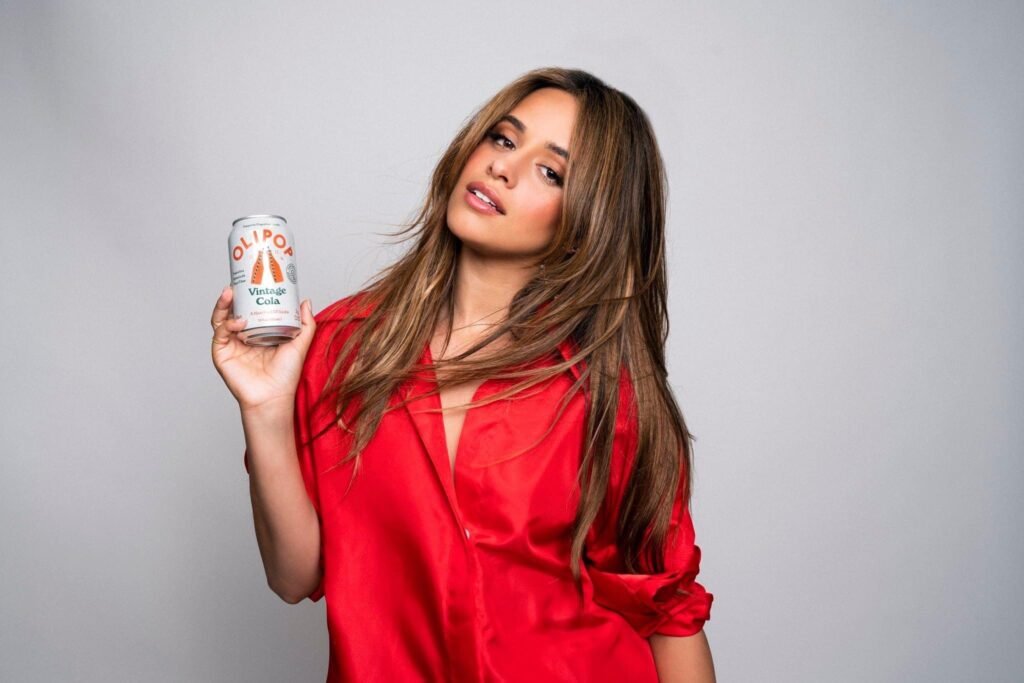
Move to steal:
- Don’t just chase big names
- Look for people whose lifestyle and followers naturally connect with your brand
It’s not about size, it’s about fit.
Olipop Declining Category Into a Growth Engine
Soda was “dead.” Sales were declining. Health drinks were supposed to be the future and Olipop saw the gap. They didn’t try to sell a kombucha alternative to soda drinkers. They sold a soda alternative to soda drinkers. That nuance made all the difference.
So,
- Don’t fight culture, remix it
- Meet people where they already are, then offer a better way
- Categories never die, they just get reinvented
Hype Without The Hype Machine
One of the most underrated parts of Olipop’s rise is how they did it without flashy ad spends in the early days.
- No celebrity-stacked Super Bowl spots.
- No “As seen on Shark Tank” moment.
They built word-of-mouth through:
- Social media UGC
- Micro-influencer partnerships
- Smart flavor drops people actually wanted
By the time they raised that $39.7M in Series B funding, they already had proof of concept. It wasn’t hype for hype’s sake.
What Every Brand Can Learn From This
We see too many brands chasing viral moments when what actually works is this:
- Clarity: Know what you’re selling and who you’re for
- Relevance: Speak their language, solve their problem
- Participation: Don’t sell to the culture, show up in it
Olipop did it by being unapologetically niche at first, letting their audience spread the word, and building from there.
The Takeaway
Whether you’re selling a drink, a service, or a SaaS product, this is the playbook:
- Tap into nostalgia
- Make it visually and culturally shareable
- Work with creators, not influencers
- Prioritize product experience over hype
- Know your category’s weakness and flip it into your brand’s strength
Olipop isn’t just a drink. It’s a case study in modern marketing done right. And if your brand isn’t studying what they did, you’re already behind.
At Viral Omega, this is exactly the kind of brand energy we build for our clients. Because these days, the market moves fast, and the brands that win aren’t the loudest, they’re the ones people want to talk about.
Let’s make your brand one of them.
It sells a soda experience people love, with a wellness edge, boosted by TikTok trends, influencer buzz, and nostalgia-driven branding Gen Z and millennials obsess over.
Prioritizes social media UGC, micro-creators, viral product drops, and authentic partnerships over big-budget traditional ads or mainstream wellness campaigns.
Poppi subtly integrates into influencers’ fridge restocks, morning routines, and “day in my life” vlogs making the product feel like an organic, must-have lifestyle essential, not a forced ad.
